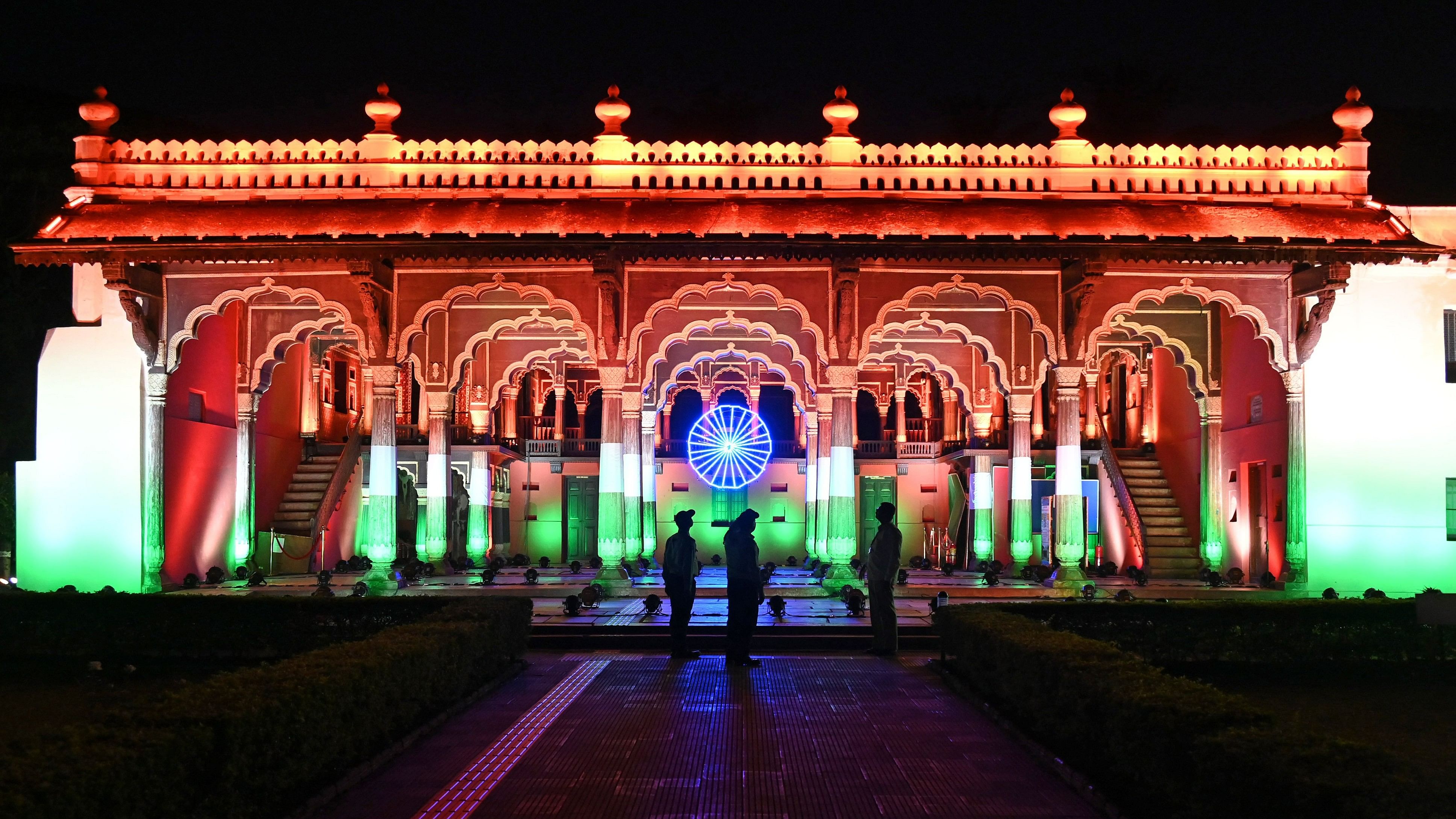
The paintings in Tipu Sultan’s Summer Palace, managed by the Archaeological Survey of India, need urgent attention, say experts.
Credit: DH PHOTO/PUSHKAR V
The collapse of a wall of the Malkhed Fort in Kalaburgi following incessant downpours has brought attention to the poor state of historical monuments and heritage buildings in Bengaluru.
There is not enough being done to conserve these monuments, but the public should also take some responsibility, feels historian Suresh Moona. “The armoury in Kalasipalya for instance is 200 years old. It played an important part in the third Anglo-Mysore war. But it is in a terrible condition. The concerned departments must create public awareness drives about the importance of these sites, so that they do not damage it and instead contribute to its preservation,” he shares.
Cracks appeared on the walls of the Vanivilas Hospital, Kalasipalya due to the underground metro construction, recalls Moona. The hospital was built in 1935. “One must take utmost care while constructing anything new in their vicinity,” he explains.
Citizen groups like Heritage Beku have been instrumental in saving heritage buildings owned by private entities. “But at the end of the day, the owner can choose to do what they want unless authorities can offer to buy. We sometimes intervene by getting fashion houses, consulates or corporations to buy or rent these properties to restore and reuse them. A fine example is designer Tarun Tahiliani’s showroom in Woodlands Hotel, Raja Ram Mohan Roy Road. It is housed in a restored heritage bungalow,” says Priya-Chetty Rajagopal, founder, Heritage Beku.
Tax breaks needed
Maintaining such large properties is not viable and property tax is a huge issue. “The changes in property tax based on capital value rather than self assessment, which is currently on hold, is a death knell to heritage conservation. In fact we urge GoK to waive property tax for heritage properties,” says Priya.
Basav Biradar, founder of HistoryWallahs, says most monuments in the city are unprotected. Archaeological Survey of India (ASI) and state archaeology departments do manage the spaces, but do not do much in terms of conservation. “A few years ago, BDA was working on a master plan which included heritage conservation as a priority but it is yet to be finalised,” he reveals. Laws are flouted routinely. “One of the ASI rule states that no building can come up within a 100-metre radius of any protected monument but the remains of the fort in the city market area is adjacent to the Victoria Hospital compound and it is surrounded by market,” he points out. He adds that the paintings on the walls of Tipu Sultan’s Summer Palace have been deteriorating over the years.
Picking up
Akhila Udayashankar, a conservation architect, is a part of the team that is currently working on restoring the government museum on Kasturba Road. She has a more positive outlook on the future of heritage buildings in the city. “In the past 5-8 years, we have been seeing an increase in efforts to restore both private and non-private buildings,” she says. Her team has worked on a number of old churches such as St Mark’s Cathedral on M G Road and St John’s Church, Frazer Town. They are currently restoring a portion of the East Parade Church on M G Road. She details the challenges conservation architects face. “It is hard to find masons who are skilled in working with lime plaster. Carpenters who are competent in working with teakwood are getting difficult to come by. A lot of the old buildings have stucco work and not many masons are adept at it,” Akhila explains.
Official speaks
D Smitha, Director, Museums, Department of Archaeology, Museums and Heritage, says that the government has been increasing its efforts to preserve heritage structures and monuments. “We introduced the ‘Adopt a monument’ scheme. Through this, NGOs or CSR initiatives can adopt a monument and maintain it for a period of five years. We are also in the process of 3D mapping temples. This way, if the temple suffers damage, it will have a digital image of what it originally looked like and can therefore restore it accordingly,” she shares